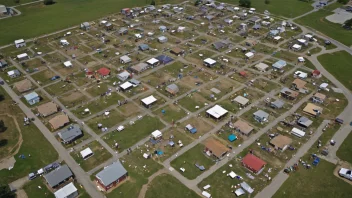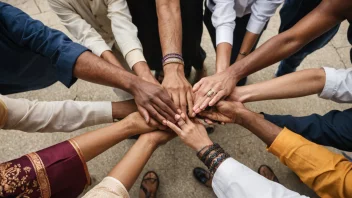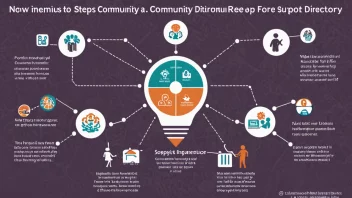In an increasingly interconnected world, the intersection of social justice movements and humanitarian aid has become a vital area of exploration. The ongoing struggles for equity, representation, and systemic change have not only shaped public discourse but have also influenced the strategies and effectiveness of humanitarian organizations. As we delve into this intricate relationship, we will examine how social justice movements have impacted humanitarian aid, the challenges faced, and the pathways for future collaboration.
Understanding Social Justice Movements
Social justice movements are collective efforts aimed at addressing inequalities and injustices within society. These movements emerge from various contexts, including racial, gender, economic, and environmental issues. They often mobilize individuals and communities to advocate for systemic change, challenging the status quo and demanding accountability from institutions.
Historical Context
The roots of social justice movements can be traced back to various historical events, including the civil rights movement in the United States, the anti-apartheid movement in South Africa, and feminist movements worldwide. Each of these movements highlights the importance of grassroots organizing, public awareness, and advocacy in driving change. Over time, these efforts have evolved to encompass a broader range of issues, including climate justice, indigenous rights, and LGBTQ+ rights.
Key Principles of Social Justice
At the core of social justice movements lies a set of principles that guide their actions:
- Equity: Ensuring fair treatment, access, and opportunity for all individuals, particularly marginalized groups.
- Participation: Encouraging active involvement of affected communities in decision-making processes.
- Accountability: Holding institutions and individuals responsible for their actions and policies that perpetuate injustice.
- Human Rights: Upholding the inherent dignity and rights of all individuals, as outlined in international human rights frameworks.
The Role of Humanitarian Aid
Humanitarian aid encompasses a range of services and support provided to alleviate suffering during crises, including natural disasters, armed conflicts, and pandemics. Humanitarian organizations strive to uphold the principles of humanity, neutrality, impartiality, and independence while delivering aid to those in need.
Types of Humanitarian Aid
Humanitarian aid can take various forms, including:
- Emergency Assistance: Immediate relief provided in response to crises, such as food, water, shelter, and medical care.
- Long-term Development: Initiatives aimed at building resilience and improving living conditions in affected communities.
- Advocacy: Efforts to raise awareness and influence policies that affect humanitarian responses and the rights of vulnerable populations.
Challenges in Humanitarian Aid
While humanitarian aid plays a critical role in addressing crises, it faces various challenges:
- Access: In conflict zones, access to affected populations is often restricted, complicating relief efforts.
- Funding: Humanitarian organizations frequently grapple with limited resources and funding constraints, impacting their ability to respond effectively.
- Coordination: The need for collaboration among multiple actors can lead to inefficiencies and overlaps in aid delivery.
The Interconnection Between Social Justice and Humanitarian Aid
The relationship between social justice movements and humanitarian aid is multifaceted. Social justice advocates have increasingly recognized the importance of humanitarian aid in addressing immediate needs while also advocating for systemic changes that tackle the root causes of injustice.
Influence on Humanitarian Practices
Social justice movements have influenced humanitarian practices in several ways:
- Community Engagement: Movements emphasize the importance of involving affected communities in the design and implementation of humanitarian programs, ensuring that aid is culturally relevant and effective.
- Equity in Aid Distribution: Advocacy for equitable distribution of resources has led to more inclusive approaches in humanitarian responses, prioritizing marginalized groups.
- Holistic Approaches: Social justice movements have encouraged humanitarian organizations to adopt holistic approaches that address not only immediate needs but also underlying social determinants of health and wellbeing.
Challenges of Integration
Despite the positive influence of social justice movements, integrating these principles into humanitarian aid presents challenges:
- Political Sensitivity: Humanitarian organizations must navigate the political landscape carefully, as advocacy for social justice can sometimes be perceived as taking sides in conflicts.
- Resource Limitations: Limited funding for social justice initiatives can hinder the ability of humanitarian organizations to adopt comprehensive approaches.
- Capacity Building: Humanitarian organizations may lack the expertise or frameworks to effectively incorporate social justice principles into their operations.
Successful Collaborations and Initiatives
Despite the challenges, numerous successful collaborations between social justice movements and humanitarian organizations have emerged:
Case Study: The Black Lives Matter Movement
The Black Lives Matter (BLM) movement has shed light on systemic racism and police violence, influencing humanitarian responses to racial injustice. Organizations have responded by developing programs that address the specific needs of communities of color affected by violence and discrimination. This includes providing mental health support, educational resources, and advocacy training.
Case Study: Climate Justice Initiatives
As climate change disproportionately impacts vulnerable populations, climate justice movements have partnered with humanitarian organizations to address environmental degradation and its humanitarian consequences. Initiatives focused on disaster preparedness, sustainable agriculture, and renewable energy have emerged, emphasizing the need for equitable solutions to climate-related challenges.
How Individuals Can Get Involved
Individuals play a crucial role in bridging the gap between social justice movements and humanitarian aid. Here are ways to get involved:
- Educate Yourself: Understand the issues surrounding social justice and humanitarian aid by reading, attending workshops, and engaging with diverse perspectives.
- Volunteer: Offer your time and skills to local organizations working at the intersection of social justice and humanitarian aid.
- Advocate: Use your voice to raise awareness about social justice issues and advocate for policies that promote equity and inclusion.
- Support Grassroots Movements: Engage with and support grassroots organizations that prioritize community-led solutions to social justice challenges.
Conclusion
The interplay between social justice movements and humanitarian aid is a dynamic and evolving relationship that holds great potential for addressing the complex challenges faced by marginalized communities. By understanding the principles of social justice and recognizing the role of humanitarian aid, individuals and organizations can work collaboratively to create lasting change. As we move forward, it is essential to embrace inclusive practices, advocate for systemic change, and empower communities to lead the way in their own journeys toward justice and equity.






